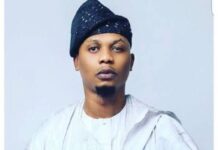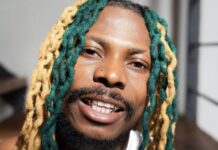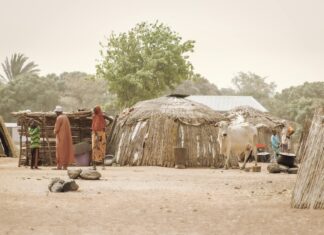Chris Paul Otaigbe
Were Umar Musa Yar’Adua to be alive today, he would have served out his two terms to the benefit of the mass of Nigerians and to the anger of the enemies of the nation. Some of his great policies would have crippled members of the cabal, whose choke-hold on the Nigerian economy continues to hold the nation down till date, and he would have been the hero of the fourth Republic.
But then, in the light of 20 years of Nigeria’s return to civil rule, those decisions he took in his time as President, remain the true pro-people policies of all time in over two decades. Yar’Adua’s story is indeed, the making of the true Nigerian President and the disposition of destiny.
And so, as Nigeria commemorates the 10th year anniversary of his death, the late Nigeria’s President who served from 2007-2010 before his death, memories of his landmark policies engineered to save the country from the crippling hands of the ‘cabal’ continues to linger.
His entry into the Nigerian national limelight was sudden as it was dramatic. He had been elected to serve his second term as Governor of Katsina, the home State of President Muhammadu Buhari, who was then, his major opponent in the 2007 Presidential election.
During a retreat organized for the People’s Democratic Party (PDP) candidates for the 2007 elections in Abuja, President Olusegun Obasanjo defined Governor Umar Yar’Adua in excellent terms. He told his listeners that only a Yar’Adua presidency can fight corruption head on and sustain the ongoing reforms of government.
Ever willing to paint Yar’Adua as fit, Obasanjo said the Katsina State Governor had been miraculously healed of a strange ailment. He told his audience that he knows everything there is to know about Umar’s ailment, assuring them that whatever the ailment was, it disappeared since 2001.
“It was a miracle. So those calling him a sick man are the ones who are sick. After all, only God can tell who is sick or not. I wonder how somebody can open his mouth and say that a human being created by God is a sick man. I am sure he has proven to those who say he cannot stand stress, that all that is not true,” Obasanjo bellowed.
To the ordinary observer, the visible dermatological defects of Yar’Adua, apparent in his face and arms, created the intrepid hint that all was not well with the Katsina Governor.
Information about Yar’Adua’s medical record was made extremely difficult, as those who knew were unwilling to open up. His assistants declined bluntly to disclose the nature of his ailment, which the then outgoing President Obasanjo claimed had been healed miraculously in 2001.
But the speculations were rife at the time, that it could be renal failure, prompting experts to caution that he was unfit to rule the country, since the office of President is very demanding and exerting.
According to a Consultant Nephrologist at the College of Medicine, Lagos University Teaching Hospital, LUTH, Dr. (Mrs.) Mabayoje, patients with kidney failure are very sick and they have to go on what is called life-supporting treatment or dialysis, which is a way of using an artificial kidney, such as machine, to remove toxins that accumulate in the blood from the body and send the blood back to the body of the patient, after it had been filtered of the toxins.
According to her, when kidneys have failed, even water becomes poisonous to the body because it cannot be got rid of.
“Can you imagine your drink now accumulates in the body, goes inside the lungs, and stays in the blood causing high blood pressure? The blood pressure goes very high and as the lung is filled with water, they cannot exchange air.” She said.
She explained that it will be quite difficult for a failed-kidney patient to cope with busy routines, adding that if a person is on dialysis, it is going to be extremely difficult, because the artificial kidney, the dialysis method, is not like what God built. It only does like 10% to 15% of the removal of the toxic substances that the kidneys normally get rid of.
In such situations, according to her, the patient’s system becomes loaded with poison, resulting in damage to the brain, heart and other organs in the body, until the patient eventually dies.
It was the magnitude of his illness, as comprehensively explained by the Medical Authority that scared Nigerians about a Yar’Adua’s presidency. It was obvious that if indeed, he was this sick, he may not live to be sworn in as President.
The opposition party took advantage of the medical condition of the PDP candidate to run adverts and speeches that persuaded Nigerians not to vote a sick person to power.
As an alternative to Yar’Adua, the group was galvanizing support for General Muhammadu Buhari, ANPP presidential candidate and Vice President Atiku Abubakar, his Action Congress counterpart at the 2007 polls.
The thrust of their campaign was that Yar’Adua was too inexperienced and sick to be entrusted with national leadership. They also said a vote for Yar’Adua was an indirect way of returning Obasanjo to power.
Nobel Laureate, Professor Wole Soyinka, shared the sentiment of the Katsina elders, which included: Alhaji Lawal Kaita, Alhaji Iro Dan Musa, Alhaji Bello Masari, Dr. Usman Bugaje, Senator Abu Ibrahim and Alhaji Ibrahim Coomasie.
While describing Yar’Adua’s candidature as “a terminal kiss from a moribund regime,” Soyinka said if Yar’Adua wanted to win the confidence of the people, then he must repudiate his party, PDP, dissociate himself from his party’s past and “pledge to reverse its menacing future.”
It would be recalled that Obasanjo had gone ahead to anoint Yar’Adua for the office of the President against wishes of the Late President, who had objected to contesting, on health grounds.
It was amidst these fears that Obasanjo staged his famous phone call, at a rally, with ‘Umaru.’
As a matter of fact, one of the rumors making the rounds in the thick of the pre-election campaign, was that Obasanjo deliberately put up a sick Yar’Adua out of anger of losing out on his secret third term agenda.
Secondly, knowing his health was not strong enough, OBJ was purposely subjecting Yar’Adua to the stress of a grueling nationwide campaign tour to wear the presidential candidate to death so, his more amenable running mate, then former President Goodluck Jonathan could take over.
In the end, the perceived terminally ill Yar’Adua, won the election in controversial alleged to have been massively rigged, and was sworn in as President.
Two things became apparent as the new President hit the ground running: first, he disappointed his critics and perhaps, OBJ’s inner worries or prayers (as the case may have been) that he would die before swearing-in. He didn’t die. In fact, he went on to live over two years more before falling to the cold hands of death mysteriously.
Secondly, it would seem, he listened to Prof. Soyinka’s words, repudiating and distancing himself from the corruption menace of his party.
It was an uphill task. The first president to publicly declare his assets, Yar’Adua was referred to as ‘go-slow,’ probably because at the time, people did not understand the baggage he had been handed, and also actually due to his thorough disposition to documents and due process.
He came in when oil prices were plummeting following global recession, and Nigeria’s economy was wobbling. He had to stabilize the economy against tumbling oil prices and declining production due to the Niger-Delta Militant mayhem.
Obasanjo had bequeathed two devastating, economy-wrecking legacies to ‘Umaru’. Movement for Emancipation of the Niger Delta (MEND) was wreaking havoc in the Southern creeks and Boko Haram had similarly mounted its killing field in the North East.
Aliyu Gusau, Nigeria’s National Security Adviser (NSA) to former President Obasanjo, had failed to stop the complications in the North and South. According to reports, Gusau had actually told Obasanjo when he was asked about Boko Haram, then called, ‘Nigerian Taliban’, that ‘no such group existed,’ in spite of attacks by the group.
Gusau was an Ibrahim Babangida (IBB) junta’s henchman and the man behind most of Nigeria’s sad history of military coups. Together with Babangida, he organized the 1983 coup and displacement of the Shagari civilian regime, in which they installed army senior Buhari as military Head of State. His duo with IBB was also behind the 1985 coup in which he removed Buhari, and the 1993 coup that saw him replace Shonekan with Abacha.
Faced with these unique, deep-rooted tasks, Yar’Adua selected a National Security Adviser, Major Gen. Sarki Mukhtar, who is remembered for opposing Abacha on the coup plotter treatment in the 90s, and who had the commitment and means to judiciously and appropriately combat the two terror difficulties.
Immediately, the Yar’Adua government with NSA Mukhtar approached the MEND crises with an understanding of the persistent condition. An Amnesty was worked out for the agitating youth who had reduced Nigeria’s oil output by almost half. Later, Nigeria would invest billions in training and rehabilitation of these youth. Peace that eluded Obasanjo had been restored to the creeks.
To attack the insurgency in the North, the duo of Yar’Adua and Mukhtar, swung into action, once more, bearing in mind, this time, the dynamics of the northern question.
According to the duo, who were also of the Northern extraction, endemic poverty and misguided fanaticism was no excuse for terrorism and murder of innocent civilians and security officers. He then sent the nation’s security men to sack the Boko Haram camps in a swift and efficient operation. This yielded the capture and subsequent execution of the terror mastermind, Mohammed Yusuf in an attempted escape. Over 700 Boko Haram terrorists were massacred in the operation of July 2009.
Having restored peace, calm and security to the country, late Yar’Adua continued managing other demanding crises he inherited from his predecessor.
The recovery of Nigeria from the cabal, another battle Yar’Adua had to confront.
Obasanjo had literally sold Nigeria to his friends, cronies and party loyalists, one of whom was Dangote. He selected and favored him, not only during his second appearance in civilian regalia but from his first service as military dictator when he gave the tycoon exclusive importation rights.
With the sale of Nigeria’s refineries to Dangote and Otedola, Dangote owned as much as half of Nigeria’s assets, which included Nigeria’s cement plants, a telecoms license and mining concessions. Bashani Aminu had disclosed to Wikileaks, that Dangote once gave Obasanjo a 35-million-dollar private jet as gratitude for his fruitful partnership.
Barely two months in office, in July, 2007, Yar’Adua summoned the Bureau for Public Enterprises (BPE), to query the sale of Nigeria’s refineries to Dangote among others. Thanks to Nigeria’s Labor Congress (NLC), the late President overturned the entire privatization process for its evident corrupt procedures.
Next, he went after Transcorp purchase of Abuja Nicon Hilton. It didn’t matter that Obasanjo anointed and coronated him to be President, Yar’Adua was determined to rescue Nigeria from the paws of the cabal, including his financial backers.
Yar’Adua’s anti-corruption war extended and dealt decisively with the Oil and Gas industry. There was the case of the kerosene subsidy scam which made new billionaires then and till date. The Nigerian people are reported to be defrauded to the tune of 10 million dollars daily from the corrupt proceeds of Kerosene.
Battling with the pain from kidney failure, Yar’Adua took his probe into the Oil industry seriously and urgently. Within his short tenure, he went hard and firm against the subsidy fraud, sending four directives signed by his Principal Secretary, Mr. David Edevbie, for the immediate discontinuation of the fake subsidy that never got to the beneficiaries, the Nigerian masses.
Government was spending millions of dollars daily, in subsidy of kerosene which was sold to the masses at unsubsidized prices in one of Nigeria’s most daring and expansive scam till date.
In the scheme, government was reported to be importing 10 million liters of kerosene every day at N156/liter, to subsidize kerosene at the cost of N40.9/liter, so the product could be sold to the masses at N50/liter.
Nigeria National Petroleum Corporation (NNPC) in turn, sold the kerosene to a handful of portfolio marketers, popularly known as the cabal, at the N40.9/liter and then turned a blind eye as the Marketers sold the product to Nigerians at N150/liter or more, thus raking in a whopping N100 per liter for 10 million liters daily. This amounted to billions of dollars annually, with claims running up to the tune of N300 trillion yearly.
Consequently, he gave a clear directive, on June 15, 2009, that NNPC should cease subsidy claims on kerosene and this was apparently going to create trouble for his predecessor and perpetrators who were reported to have panicked.
Not stopping there, Yar’Adua ordered the Economic and Financial Crimes Commission (EFCC) to go after anyone, barring none.
In a report published in the February 19, 2014 edition of Action ENDS, an online publication, Ambassador Maitama Sule revealed that Obasanjo was scared Yar’Adua would soon come after him, while Action Congress (AC)’s Garba Shehu said Atiku warned Yar’Adua that Obasanjo was plotting to remove him for his “treachery.”
Fearlessly, he reversed Obasanjo’s policies that were considered to be inimical to national interest, saved the country’s three refineries from being auctioned to businessmen, who could not establish theirs and stood against the nation’s comatose telecom giant, NITEL from being auctioned throughout his days in office.
The late President fought corruption to its knees, pioneering the policy of return of unspent funds to the national treasury at the end of every fiscal year.
Some of his high-profile anti-corruption victories included the prosecution and jailing of those believed to be untouchable such as his party chieftain, Chief Olabode George who was convicted.
Early in his administration, he saved the jobs of over 160,000 federal workers that had been penciled for sack under various pretenses. He also released the N10 billion Lagos State local government councils’ funds which Obasanjo sat on, despite court orders.
His most celebrated achievement yet, was his reversal of the increment of Value Added Tax (VAT) from 10% to 5% as well as the hike in fuel price from N75 to N65 per litre.
Under his watch, the courts regained the freedom they lost during Obasanjo’s tenure and handed down verdicts that voided political victories even though his party, the People’s Democratic Party (PDP) was the victim.
He pioneered commendable projects across the country, initiating the dredging of River Niger, a project that was abandoned for decades and reviving the abandoned rail project.
To clean up the rot in the banking sector, he brought Sanusi Lamido Sanusi to head the Central Bank, thereby saving the country from a looming financial crisis.
Born on August 16, 1951, to an elite Fulani family, in Katsina, Nigeria, Yar’Adua’s birthplace was an important centre of Islamic learning.
His family was prominent in both traditional and modern politics; his father served as a federal minister during the First Republic (1960–66), and his late elder brother, Shehu Musa Yar’Adua, served in the military government of 1976–79.
Yar’Adua received his university education at Ahmadu Bello University in Zaria. From 1975 to 1983, he taught in various colleges and a polytechnic school before becoming a businessman, serving in management and as a director of many companies.
Yar’Adua first entered party politics as a mobilizer for the (now defunct) People’s Redemption Party. During the long transition program (1989–93) to restore the Nigerian government to civilian rule, he became a founding member of the Peoples’ Front, a political association led by his elder brother, which eventually became the core of the (now defunct) Social Democratic Party.
Yar’Adua began concentrating on State politics in 1991, when he stood as a candidate in the Katsina State gubernatorial election, which he lost. Seven years later, Yar’Adua participated in the founding of the K34 political association, which later merged with the People’s Democratic Party (PDP).
He again ran for governor, winning the election in 1999 and reelection in 2003. As State governor, he focused on the socioeconomic development of his state, with particular attention to the educational and health sectors, and was known for being financially prudent: not only did he pay down the huge State debt that he had inherited, but he also accumulated a $50 million surplus in the treasury.
As President, Yar’Adua demystified the so-called invincible Nigerians and deconstructed power, humbled to a fault and firm in his resolve to save Nigeria from the hands of the dreaded cabal under his watch. Operating within the bounds of the law, Yar’Adua was true to the rule of law and due process.
Having tested two administrations after him, Nigerians would wish that Yar’Adua did not die on May 5, 2010 because they now know that if he had lived long enough to complete his two terms in good health, he would have turned Nigeria around and perhaps liquidated the cabals who have now grown too strong for successive governments after him.
For Nigerians, Umar Musa Yar’Adua stands out, so far, as Nigeria’s 4th Republic HERO of democracy










